Tamara Thiessen tackles France’s new cycling route, La Seine à Vélo, which unfurls along the Seine from Notre-Dame in Paris to the Normandy coast through a multitude of cultural and natural wonders.
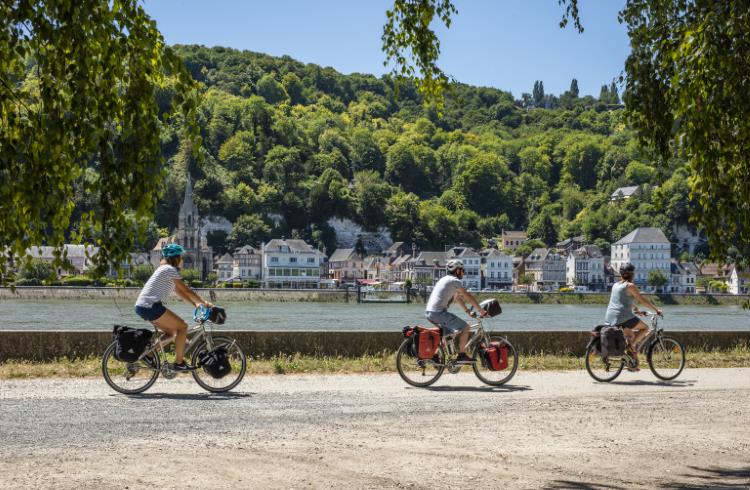 Photo © David-Darrault-La-Seine-à-Vélo
Photo © David-Darrault-La-Seine-à-Vélo
As I eye up Monet’s garden of nymphéas – his famous water lilies – at his home in Giverny at the end of a cruisy half-day bike ride, I am thinking how sweet freedom tastes.
The Seine à Vélo will go down as the route that helped me keep my sanity through many long months of lockdowns. A cycling lifesaver.
The route’s launch in mid-October 2020 fell in an interlude between pandemic lockdowns one and two. With just a fortnight to go, we grab our bikes and bags and run … or rather pedal.
The 260mi (420km) itinerary snakes its way along the Seine from Paris to the sea, mapped out in 15 stages. If you are time-strapped, there are easily skippable stages. You can also customize it by difficulty level or the scenery you want to see.
"Cycle along to your criteria" urges the website. These include “I cycle often”, “beginners”, or “family trip”.
Given we live in the French capital, we decide to skip the first four legs through Greater Paris as we already know those sites – from the Canal Saint-Martin through to Empress Joséphine’s Château de Malmaison, which she inherited upon her divorce from Napoleon.
Instead, we launch straight into mid-Autumn canal-side cruising in the footsteps of the Impressionists.
- From Paris to the border of Normandy
- From Monet’s heartland to Les Andelys’ mighty fortress
- Rouen: fantastic food, a famed cathedral, and Joan of Arc
- A change of air: Rouen to the seaside
From Paris to the border of Normandy
After a 36-minute trip from Paris-Saint-Lazare station we arrive in Mantes-la-Jolie, still in the Île-de-France region. It’s a regional TER train, so we can take our bikes on board for free without a reservation, unlike many super-fast TGV trains. Nor do we need to pack them away. (Note: If you are renting bikes, the best place to do so is the capital.)
After fast-tracking it to stage 4, we meander around the north bank of the Seine on well-marked tracks. It’s an Indian summer blue-sky day. After about an hour, on the outskirts of the village of Vétheuil, we pass an ochre-yellow house near a bend in the river.
Monet lived here in 1878. The view over the water of the old winemakers’ houses on the slopes recalls one of his paintings, Vétheuil in Summer. The scene was captured from his floating studio – a boat.
A couple of miles on, still hugging the river, we encounter a remarkable church, its spire surging from the chalky white cliffs. The troglodytic church of Haute-Isle was gouged into the rock in the 1600s like many of the earliest dwellings in the Seine River Valley.
At our next stop, La Roche-Guyon, we see many troglodyte caves. The village and its splendid château sit on a forested bend of the Seine, presided over by a cliffside medieval fortress.
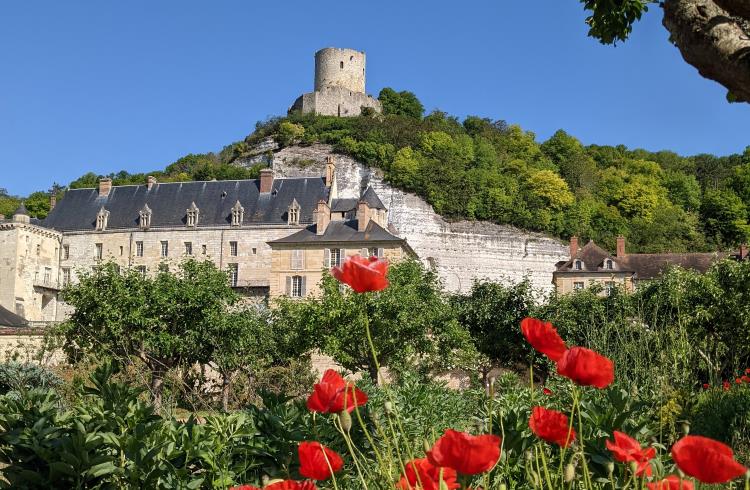
This is the only place in Greater Paris to make it to the most beautiful villages of France list. It lies right on the border with Normandy, so the charming half-timbered houses of that region make their first appearance.
At the château, we visit the grand salon, gardens, and stables. Then we climb a troglodyte passageway to the top of the dungeon for a panorama over the town roofs and riverside.
We are immersed in greenery and watery scenery, just as the route’s jingle promises. Au fil de l’eau – a journey along the water.
From Monet’s heartland to Les Andelys’ mighty fortress
Next is stage 5, a 12mi (19km) ride to Claude Monet's museum home in Giverny.
The stroll through the grounds and home where he lived for 43 years is one through art history. Monet's legacy comes to life among the weeping willow reflections and Japanese bridges of the Water Garden and the beautifully staged decor of the interiors, from the blue sitting room strung with brass pans to the artist's bedroom displaying many of his works.
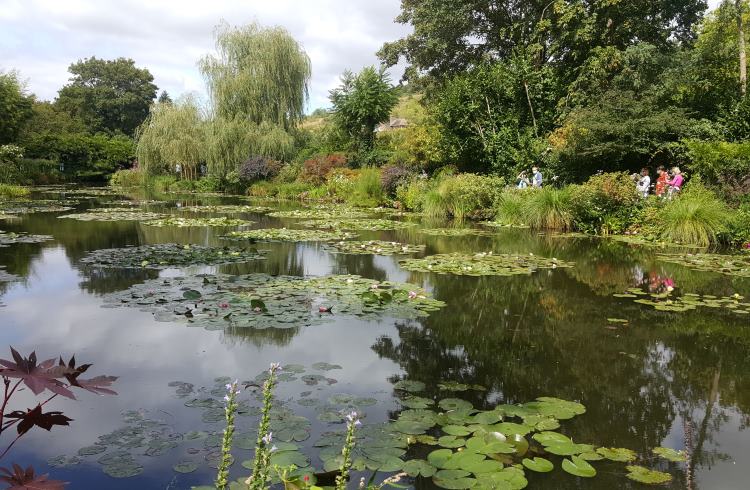
On 16mi (26km) stage 6, Vernon/Les Andelys, we’re on dedicated bike paths for about 20% of the journey. The rest is a mix of minor roads, dirt, and grassy tracks. The fully bike-adapted "greenway" along this stretch is due for completion by 2023.
Along the way, we skirt ancient Seine-side quays and watermills, built in Normandy style, with criss-cross wooden beams. The Vieux-Moulin of Vernon straddles the river precariously on the remnants of a medieval bridge.
Overseeing a mighty loop in the Seine, the Château Gaillard at Les Andelys was built for Richard the Lionheart – English King, Duke of Normandy – in 1198.
We call it a day at a lovely, ivy-walled farmhouse B&B with a view of the imposing Normand fortress ruins. Down the street, we enjoy fresh local produce, Normandy cheeses, salmon, and beer in a cozy, chic bistro.
Rouen: fantastic food, a famed cathedral, and Joan of Arc
After taking a few shortcuts on stages 7 and 8, we arrive in Rouen. We are hungry, which is fortuitous in a city whose cuisine is flagged by UNESCO as a Creative City of Gastronomy.
The "city of 100 steeples" is laden with World Heritage history, fine art – and fine food. The cider is refreshing and dishes from scallops to the puff pastry dessert douillon d’Elbeuf are flavored with calvados, apple, and honey.
Today, there are only 38 steeples left due to the destruction wrought by the French Revolution and World War II. The Gothic cathedral, with its 495ft (151m) spire, rockets up in the heart of the old town.
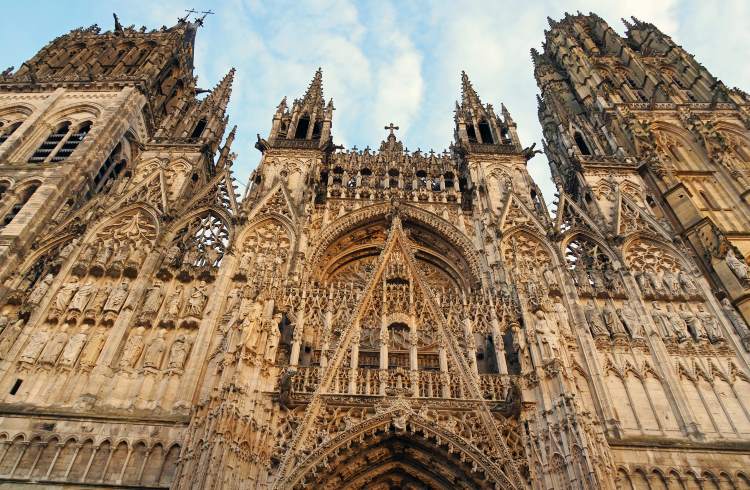
Passing through cobblestone streets and under the Gros Horlodge astronomical clock, we come to the historic market square, Place du Vieux-Marche. At its center is a church commemorating the city's heroine, Joan of Arc. The Saint was burned at the stake here by the English in May 1431. Her presence is everywhere – in butchers, bars, bakeries, bridges, schools, and streets named Jeanne d’Arc.
We spend a couple of hours art-gazing at the Musée des Beaux-Arts, the biggest collection of Monets, Sisleys, and Renoirs outside of Paris. Then it's time to return to the capital, with another lockdown looming like Darth Vader’s shadow. Loading our bikes onto the TGV Rouen-Paris is a breeze.
A change of air: Rouen to the seaside
In the New Year, as the second lockdown eases, we hit the road again for a big breath of fresh air. On Saturday morning, we go by train to Rouen, ready to tackle stages 9 and 10.
The first 12mi (19.5km) is an easy riverside stretch, marked as family friendly. At the end, we climb aboard a free ferry, the bac de Sahurs, and cross the river to La Bouille. The charming village, nestled into forested cliffs, was loved by Turner, Sisley, and Gaugin.
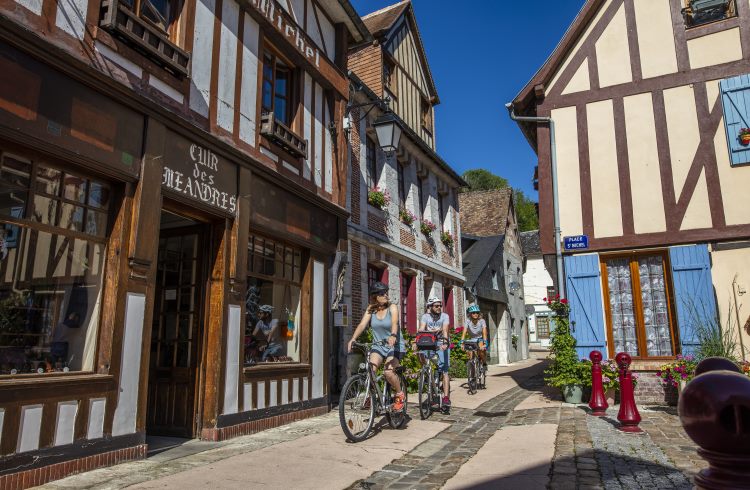
30 minutes on, we take another ferry from Yville-sur-Seine to reach Jumièges at the end of stage 10. Its Benedictine abbey was “the most beautiful ruin in France" according to Victor Hugo.
From Jumièges, you can choose to head east to the UNESCO-packed port city of Le Havre, or west, as we do, towards the sweeping expanse of beach umbrellas and glamorous boardwalk at Deauville.
But the thing I want to – must – see is the Victor Hugo Museum in Villequier, which is part way along stage 11 towards Le Havre. We do some improvising to include that in our stage 13. The detour adds an hour and lots of cultural and scenic rewards to our journey.
That's the beauty of the route – it’s totally tweakable to your time and fitness constraints, and your whim and fancy, as long as you plan to arrive in and leave from a town with good train connections.
On our Sunday ride, the Seine lassos in a big loop through the forests and thatched cottages of the Parc Naturel Régional des Boucles de la Seine Normande. It’s peaceful pedaling and blissful bucolic biking the whole way.
After 27mi (44km) to the wetland wonders of Marais-Vernier, we sleep over and fuel up for a grueling last day.
The Honfleur/Deauville option is tougher. Both stages 14 and 15 come with a warning “it rises”. Again we deviate, to cut the 45mi (73km) course almost in half. We miss some lofty inland views but save our legs by sticking to the Seine estuary and the coast.
If you want, you can take a TER train from Honfleur to Le Havre in 40 minutes and peak-bag, reaching both endpoints of the ride. Either way, you can be back in Paris in a couple of hours.
But we've done enough cheating as it is, and we’re ready to return home. Over our two trips, we've accomplished about two thirds of the ride – and it's felt more like an amazing discovery than simply going with the flow of the Seine.
Related articles
Simple and flexible travel insurance
You can buy at home or while traveling, and claim online from anywhere in the world. With 150+ adventure activities covered and 24/7 emergency assistance.
Get a quote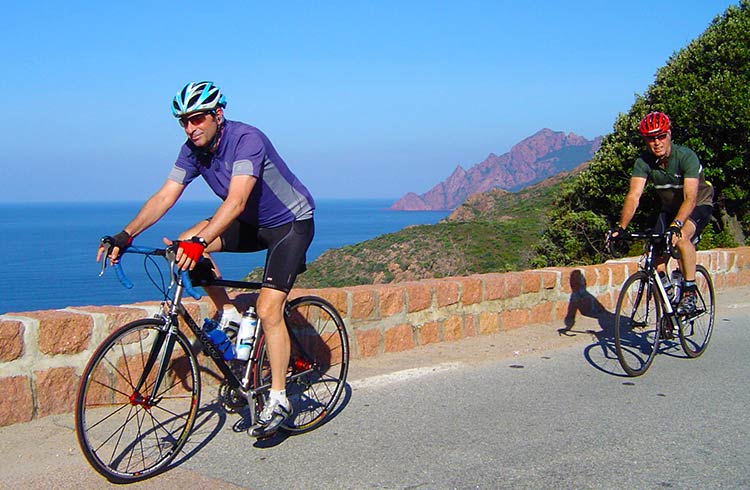
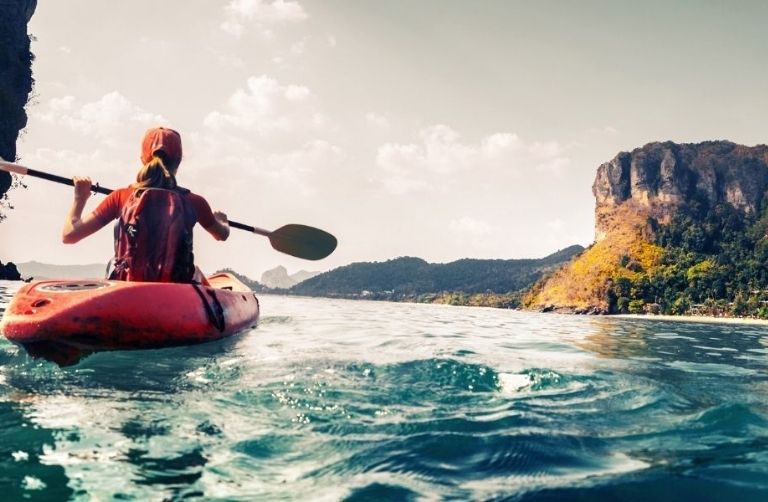
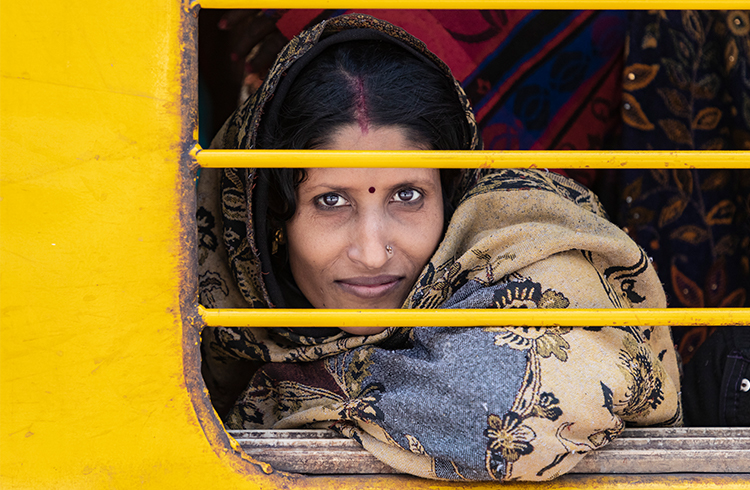
1 Comment
I am a keen cyclist and would like more information on how to plan a ride in France or other European countries. I am an older person and lacking a little confidence in getting my self organised , I plan to do some travelling in the next 12 months.
Previously 2009 I cycled around the Netherlands and in 2015 I walked the Camino and then backpacked around Spain & Portugal.
Since the pandemic it has been difficult for me to be inspired to travel, reading this email to do get organised